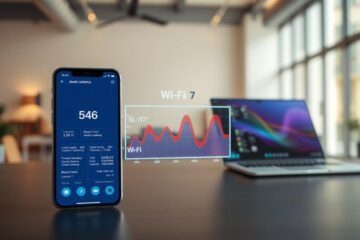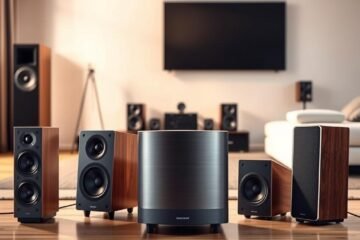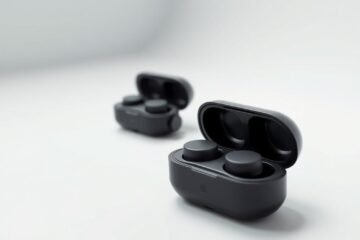Surprising fact: over 40% of U.S. households staged at least one backyard movie night in 2025, and many chose all-in-one units to keep setup quick and simple.You want a fast path to a great outdoor movie without hauling extra gear. Built-in sound cuts cables and fuss.
This guide shows the top picks, key specs, and real-world run times so you can plan a full evening.
We compare tested leaders like the Anker Nebula Capsule Air and Mars 3, Xgimi Halo+, Epson EpiqVision Mini EF22, and the bright Hisense C2 Ultra. Expect clear notes on brightness standards (ANSI vs ISO), native resolution, battery life, and image quality so you know how big and bright the picture will be after sunset. If you’re looking for the best mini projectors with speakers for realworld use, you’ll find great options here.
What you’ll get: expert-vetted top 10 picks, a buyer checklist, quick setup tips for U.S. backyards and patios, and our Editor’s Picks for value, premium, and portability.
🎬 Quick Answer
What is the best portable mini projector with speakers for outdoor movies in 2025?
👉 The Anker Nebula Capsule 3 Laser is the best portable option, offering 1080p resolution, compact size, HDR support, and built-in speakers. Perfect for camping, travel, and small outdoor movie nights.
Key Takeaways
- You’ll find the best outdoor projectors that pair easy setup with solid sound.
- Battery life and brightness affect how long and how big your movie night can be.
- Built-in audio reduces accessories and speeds up backyard setup.
- We include real-world run times and clear specs for confident buying.
- Compare models by brightness, resolution, and best use case to choose faster.
Outdoor movie nights are trending in 2025
More Americans are trading the living room for the lawn, turning patios into shared screening spaces this year. You’ll see gatherings grow because outdoor setups give flexible, low-cost entertainment without a fixed TV.
Why backyard cinema is booming in the U.S. right now
Portable convenience drives the trend. Tiny pocket units like the Aurzen ZIP Tri‑Fold (~9.9 oz, 100 ANSI lumens) sit beside rugged, high-bright models such as the Anker Nebula Mars 3 (1,000 ANSI lumens, ~5 hours Eco).
The brightest room-to-room choices, like the Hisense C2 Ultra (3,000 ANSI lumens, 4K via XPR), let you host larger crowds and beat ambient lights after dusk.
What this product roundup covers and how it helps you choose
This projector review speeds decision-making by comparing brightness, resolution, battery life, and speaker performance side-by-side.
- Quick specs to match your yard size and ambient lights.
- Short profiles with Key Features, Pros & Cons, and Best For recommendations.
- Practical setup tips to cut your prep time and improve presentation quality.
Why choose a mini projector with speakers for outdoor entertainment
An all-in-one compact unit saves time and keeps setup simple. You carry a single device that handles image, audio, and streaming. That makes backyard movie nights faster to start and easier to share.
Grab-and-go convenience: fewer cables, faster setup
Built-in sound means you bring one device, not a stack. That reduces trip hazards and gives a cleaner layout around blankets and chairs.
Autofocus and auto‑keystone square the frame fast when you change position. For casual audiences, this delivers clear dialog at short to medium seating distances.
Battery-powered freedom: couch, backyard, or camping
Battery models free you from hunting for outlets. The Anker Nebula Capsule Air packs Google TV and a licensed Netflix app into a 1.4 lb chassis for true portability.
The Mars 3 adds a rugged build and long run times, so you can move between spots without losing power.
Smart streaming built in: Google TV and similar OS options
Integrated platforms like Google TV and Android TV keep your apps and Wi‑Fi saved on the device. That reduces setup steps and avoids extra streaming sticks.
Bluetooth out gives you the option to add more volume later, while the base unit stays the single hub for the evening’s entertainment.
| Benefit | Why it matters | Example |
|---|---|---|
| All‑in‑one sound & stream | Fast setup, fewer cables | Nebula Capsule Air |
| Battery power | Use anywhere, no outlet needed | Mars 3 |
| Smart OS | Apps, settings, and profiles live on device | Xgimi Halo+ |
Understanding brightness, resolution, and image quality outdoors
The right mix of lumens, native resolution, and light source keeps your outdoor picture sharp and colorful.
ANSI lumens vs ISO lumens explained for backyard viewing
ANSI lumens are a standardized way to measure brightness. Brands sometimes quote ISO lumens instead; the Epson EpiqVision Mini EF22 lists 1,000 ISO lumens but will look similar to many ANSI figures in real use.
For twilight or porch lighting, aim for 700–1,000+ ansi lumens. A 1000 ansi lumens class unit like the Anker Nebula Mars 3 holds up better on larger screens than a pocket 100‑ANSI model such as the Aurzen ZIP.
Native resolution, pixel shifting, and perceived sharpness
Native resolution defines the true pixel count on the imaging chip. Many 1080p units accept 4K input and use pixel shifting (XPR) to boost detail.
Pixel shifting can deliver near‑4K perceived sharpness without the cost of native 4K. That helps your image quality at typical backyard sizes.
LED and laser light sources: longevity, clarity, and color
LED and laser are solid‑state sources that last far longer than bulbs. An LED light source keeps colors stable and runs cool.
Laser engines, including systems like the nebula capsule laser line, often look brighter and crisper for the same rated lumen count. Outdoors, choose higher brightness or a smaller screen to protect contrast when ambient light appears.
- Autofocus and auto‑keystone keep edges sharp if gear shifts.
- Check color accuracy and shadow detail; some 1080p units handle HDR well, but SDR can appear more natural on compact models.
- Use this projector review guidance to match brightness and resolution to your yard and timing.
Six important factors to consider before buying
Start by matching the device’s brightness and battery to your usual viewing habits. That single step saves you from buying too little light or too little run time.
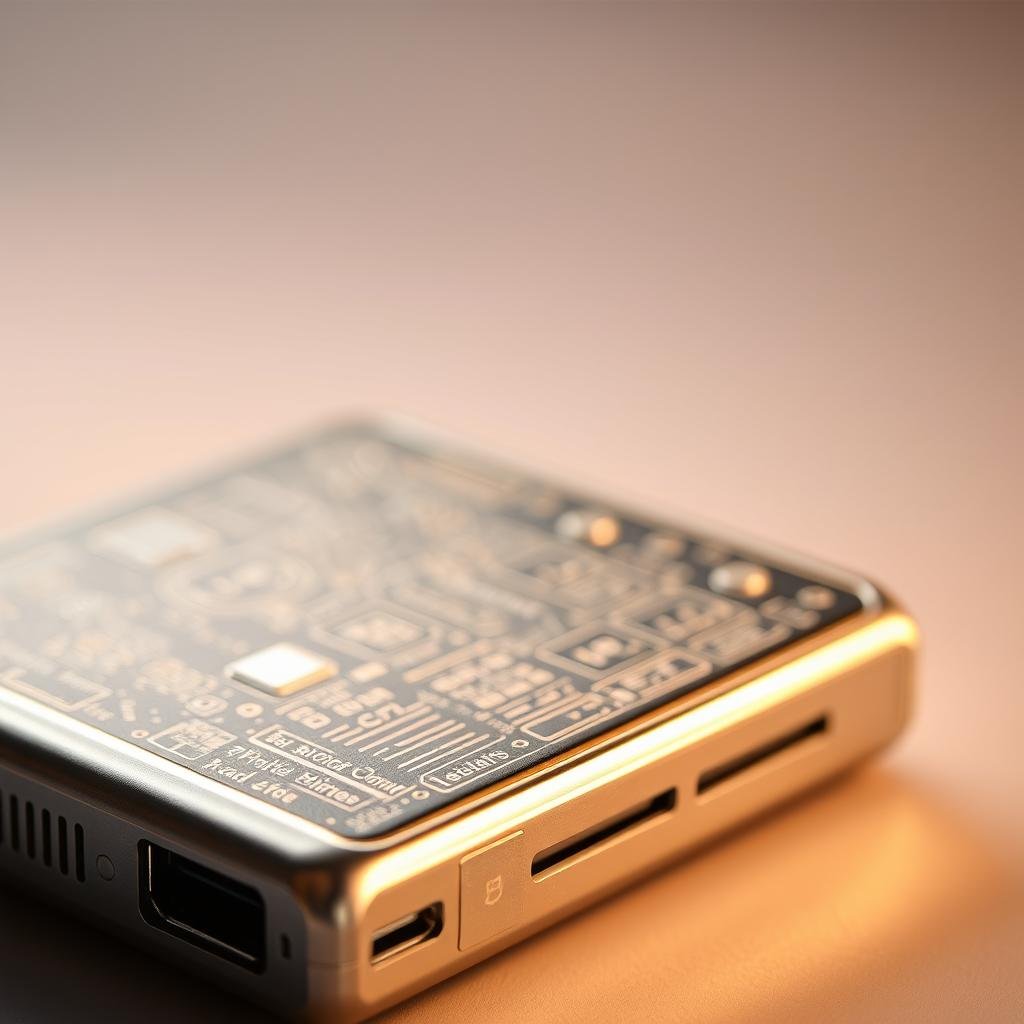
Brightness for dusk vs fully dark viewing
Decide if you watch at dusk or after full dark. Dusk needs higher lumens; full dark lets you pick lighter, more portable models for an 80–120 inch screen.
Battery life and power bank compatibility
Check real battery ratings: Mars 3 can run ~2 hours at full brightness or up to 5 hours in Eco. Many units last 90–150 minutes. Confirm if the unit supports charging while playing and USB‑C power bank input for longer sessions.
Audio: built-in speaker loudness and clarity
Speaker quality varies. Look for higher‑watt drivers or branded audio if you expect larger groups or open-air seating.
Portability: size, weight, and ruggedness
Balance weight and performance. Sub‑2 lb models are easy to carry. Heavier designs deliver brighter output and tougher builds for repeat outdoor use.
Streaming and connectivity
Prefer devices with Google TV or Android TV to cut setup time. Check HDMI 2.1, USB‑C, Wi‑Fi, and Bluetooth so you retain control over sources.
Keystone, autofocus, and setup speed
Fast autofocus and auto‑keystone matter when you move locations often. Also confirm native resolution (1080p is ideal for backyard text and detail) and HDR handling for best image quality.
- Checklist: viewing time, brightness, real battery life, power bank support, speaker wattage, weight, ports, autofocus, native resolution, and screen choice.
The 10 best mini projectors with speakers for outdoor movies 2025
Find the best compact units for evening screenings by scanning these clear, short profiles.
Anker Nebula Capsule Air — 2025
Key Features: 150 ANSI lumens; 720p native resolution; Google TV with licensed Netflix; HDMI 2.1, USB‑C, Wi‑Fi, Bluetooth; 1.4 lb soda‑can design.
Pros: Ultra‑portable, excellent app support, solid image quality for its class.
Cons: Limited brightness for dusk; no 3D.
Best For: Travelers and small patios that need true streaming in a compact body.
Xgimi Halo+ — 2025
Key Features: 900 ANSI lumens (AC); 1080p native resolution; Android/Google TV; ~2.5‑hour battery; strong onboard audio.
Pros: Bright, crisp, and loud enough for larger outdoor groups.
Cons: HDR is decent but SDR often looks better; Netflix may need a workaround on some units.
Best For: All‑in‑one outdoor nights where brightness and sound matter most.
Anker Nebula Mars 3 — 2025
Key Features: 1,000 ANSI lumens; 1080p; Android TV 11; rugged water/drop/dust resistance; 2h full/5h Eco battery; acts as Bluetooth speaker and power bank; 9.9 lb.
Pros: Durable build and long runtime outdoors.
Cons: Heavy for frequent transport; no optical zoom.
Best For: Backyard and multi‑site camping where toughness and battery life are essential.
🎬 Quick Answer
What is the best backyard projector with speakers in 2025?
👉Anker Nebula Mars 3 is great for rough nights. It has native 1080p, about 1,000 ANSI lumens, and a long-lasting LED light. It also comes with Android TV 11, auto image tools, and a battery that lasts up to five hours in Eco mode. Great for family outdoor movie nights.
Epson EpiqVision Mini EF22 — 2025
Key Features: 1,000 ISO lumens; 1080p 3LCD (rainbow‑free); Google TV; gimbal mount; auto adjustments; twin 5W drivers plus passive radiator.
Pros: Fast setup and clean image without rainbow artifacts.
Cons: May lose some shadow detail in challenging scenes.
Best For: Viewers sensitive to artifacts who want quick deployment and stable image quality.
Hisense C2 Ultra — 2025
Key Features: 3,000 ANSI lumens; 4K via XPR; Vidaa OS; JBL audio (2x10W + 20W sub); optical zoom; gimbal mount; 13.9 lb.
Pros: Top brightness, strong color, and full‑range audio for backyard cinemas.
Cons: Heavy for regular transport; some users note DLP rainbows.
Best For: Premium backyard setups and room‑to‑room 4K viewing where sound counts.
🎬 Quick Answer
Which mini projector with speakers is best for a theater-like outdoor experience in 2025?
👉 The Hisense C2 Ultra delivers 3,000 ANSI lumens; 4K via XPR; Vidaa OS; JBL audio (2x10W + 20W sub); optical zoom; gimbal mount; 13.9 lb. making it the top premium pick for outdoor movie nights.
Anker Nebula Capsule 3 Laser — 2025
Key Features: 1080p laser engine; ~2.5‑hour playtime; quick autofocus and auto‑keystone; Wi‑Fi streaming in a can‑style body.
Pros: Crisp, laser‑bright look and fast setup.
Cons: Laser models typically cost more than LED peers.
Best For: Nights when you want laser clarity and quick deployment in a soda‑can form.
Kodak Luma 450 — 2025
Key Features: 200 ANSI lumens; native 1080p; Android 9 streaming; battery up to 2.5 hours Eco; HDMI/USB, Bluetooth/3.5mm out.
Pros: True full HD in a palm‑friendly shell.
Cons: Limited picture controls and slight oversharpening up close.
Best For: Portable full‑HD viewing when you want a light, easy companion.
Aurzen ZIP Tri‑Fold Portable Pocket Projector — 2025
Key Features: 100 ANSI lumens; 720p via XPR; ~90‑minute battery Eco; autofocus; auto vertical keystone; Wi‑Fi Direct; 9.9 oz.
Pros: Ultra‑portable tri‑fold design that fits into small bags.
Cons: Limited brightness and optional dongle needed for some HDMI sources.
Best For: True pocket carry for spontaneous late‑night screenings on small screens.
Kodak Luma 75 — 2025
Key Features: 30 ANSI lumens; 640×360 native resolution; ~90‑minute battery; HDMI/USB; precise focus control.
Pros: Extremely compact and easy to use.
Cons: Low brightness and resolution limit usable screen size.
Best For: Casual, fully dark viewing where portability is the top priority.
Smart Portable Kids Mini Projector — 2025
Key Features: 480p LED; mirrors Android/iPhone; power bank compatible; built‑in speaker; blue light protection; ages 7+.
Pros: Family‑friendly design and simple setup.
Cons: Lower resolution and brightness than higher‑end units.
Best For: Bedtime stories, cartoons, and safe kid‑focused playback indoors or outdoors after dark.
Want cinema-quality sound with your projector? Don’t miss our guide to the Best Smart Soundbars for an Immersive Home Theater in 2025
Best mini projectors with speakers comparison table
A clear spec table helps you match brightness and runtime to your usual screen size. Below is a side-by-side comparison of the top portable units to speed your buying decision.
| Model | Brightness (Lumens) | Resolution | Battery Life | Price Range | Best Use Case |
|---|---|---|---|---|---|
| Capsule Air | 150 ANSI | 720p | Integrated | Mid | Travel patios |
| Halo+ | 900 ANSI (AC) | 1080p | ~2.5h | Mid‑high | Brighter outdoor images |
| Mars 3 | 1,000 ANSI | 1080p | 2h full / 5h Eco | Mid‑high | Rugged outdoor nights |
| EF22 (Epson) | 1,000 ISO | 1080p | Gimbal mount (AC) | High | Rainbow‑free room‑to‑yard moves |
| Hisense C2 Ultra | 3,000 ANSI | 4K via XPR | NA | Premium | Premium 4K + robust audio |
| Capsule 3 Laser | Laser (bright) | 1080p | ~2.5h | Mid‑high | Fast laser setup on the go |
| Luma 450 | 200 ANSI | 1080p | Up to 2.5h Eco | Mid | Palmtop full HD |
| Aurzen ZIP | 100 ANSI | 720p via XPR | ~90 min | Budget‑mid | Pocket carry |
| Luma 75 | 30 ANSI | 640×360 | ~90 min | Budget | Dark, small screens |
| Kids Mini | 480p LED (nominal) | 480p | Power bank friendly | Budget | Family learning & cartoons |
Quick takeaways
Brighter models (900–3,000 ansi lumens) support larger screens and better image quality in mild ambient light.
Battery trade‑offs: 2–2.5 hours covers most films; Eco modes extend runtime at lower brightness.
Match native resolution to seating distance: 1080p keeps text and fine detail crisp on larger screens.
Choose rugged designs like Mars 3 for dusty or damp yards, and consider the Hisense C2 Ultra if you want premium sound and 4K capability.
Value picks: best bang for your buck in 2025
A smart value pick gives you big-screen impact without breaking the bank. Pick a model that matches your typical yard, runtime needs, and how often you move gear.
Top value choice for most backyards
The Xgimi Halo+ balances 900 ANSI lumens, 1080p, and strong audio so you get a reliable outdoor movie setup. It acts as a solid portable projector for most U.S. home lawns and handles group viewing better than many sub‑$500 options.
Budget-friendly pick for casual viewing
If you want true pocket convenience, the Kodak Luma 75 is a fine pocket projector for dark, small‑screen nights. For a step up in picture size, the Kodak Luma 450 offers full HD in a light palmtop shell at a mid price.
- Streaming and compact: Anker Nebula Capsule Air gives Google TV and Netflix in a can‑style body.
- Sale pick: Check Anker Nebula Mars 3 deals for rugged, brighter options that sometimes match value buys.
- Practical tip: consider ambient light and typical movie length—brighter value models beat pocket units when street or porch glow is present.
“Choose value by matching brightness and runtime to your usual viewing habits.”
Premium picks: when image and sound quality come first
When image fidelity and room-filling sound matter most, you want choices that deliver both. These premium models trade extreme portability for brighter output, deeper contrast, and louder, cleaner audio for your outdoor theater nights.
High-brightness portable with strong audio
Xgimi Halo+ stands out as a portable projector that pushes 900 ANSI lumens (AC) while keeping good onboard audio and watchable HDR. It produces bigger images that resist ambient light and keeps text and fine detail readable across a typical backyard seating area.
4K room-to-room powerhouse with robust speakers
Hisense C2 Ultra is built for a theater-like feel. Its 3,000 ANSI lumens and 4K via XPR deliver cleaner detail, stronger contrast, and richer color on large screens. The Vidaa OS and JBL drivers, plus an integrated sub, give you serious sound that fills a room or yard.
- Optical zoom and gimbal mount on the C2 Ultra help frame large images precisely.
- Both units offer fast autofocus and platform-level streaming for quick setup.
- If rainbow artifacts bother you, consider the Epson EpiqVision 3LCD models for rainbow-free images.
“Choose premium when you host larger groups or want the wow factor of brilliant highlights and powerful, built‑in audio.”
Ultimate portability: pocket and can-style minis
Small form factors turn big ideas into instant movie nights wherever you roam. These shapes focus on ease: fast setup, light carry, and reliable app support for quick streaming.
Best soda-can form factor for travel and patios
Anker Nebula Capsule Air packs Google TV into a 1.4 lb can that fits small bags and hands. It balances decent sound and a steady image, so you get a better evening than most pocket units.
Best pocket projector for on-the-go media
Aurzen ZIP Tri‑Fold folds tiny (near post‑it size) and weighs under a pound. It offers autofocus and auto keystone for quick framing on small screens.
- Capsule 3 Laser: laser clarity and ~2.5 hours playtime for patios and travel lounges.
- Kodak Luma 75: featherweight at 5 oz but 30 ANSI lumens limits screen size to dark, small displays.
- Battery and power: expect 90–150 minutes typical life; confirm power bank support to extend time.
Bottom line: pocket models win on convenience; can‑style minis strike a balance between sound, image, and carryability. Use this pocket projector guide in your next projector review to match gear to where you go.
How to set up an outdoor movie night with a mini projector
Good placement, steady power, and clear sound turn a yard into a cinema fast.
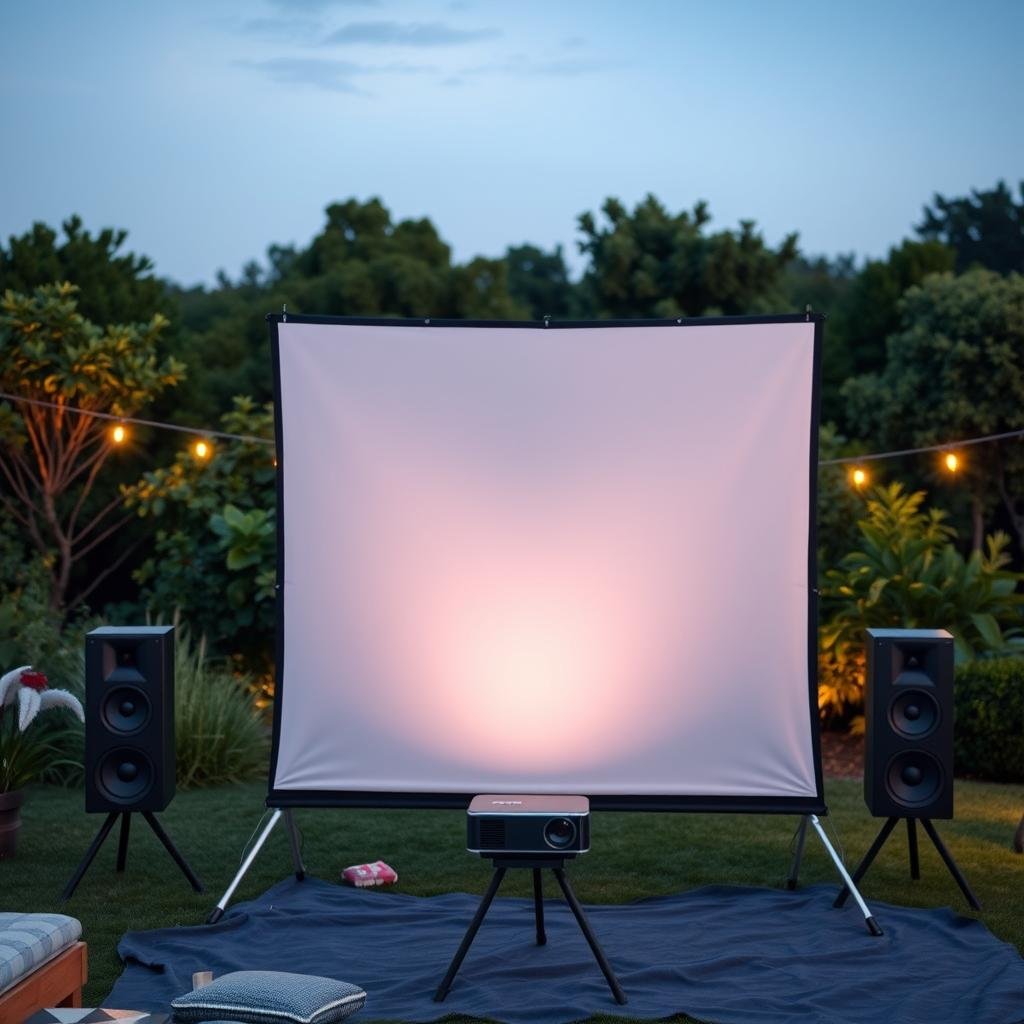
Screen options: white wall vs portable projector screen
White wall works in a pinch but can show texture and lower contrast. A portable screen improves contrast and cleaner images, especially under porch lights.
Positioning and throw distance for best image
Start at the manufacturer’s recommended throw distance. Use autofocus and auto‑keystone sparingly to keep the image sharp.
Keep the lens centered to the screen height. A small tripod or stable table helps avoid edge blur and heavy keystone correction.
Power and battery management, including power banks
Fully charge your unit and bring an extension cord. Confirm if your model runs while charging or accepts a power bank — the Mars 3 can act as a power bank and many soda‑can designs handle USB‑C input.
Match runtime to movie length and add a 20–30 minute buffer for trailers and credits.
Sound optimization when the built-in speaker isn’t enough
If onboard audio is too small, pair a Bluetooth speaker or use 3.5mm/HDMI audio out for clearer dialog. Position speakers near the audience, not behind the screen, for better control of directionality.
Looking to upgrade your outdoor setup? Pair your projector with one of the Best Portable Bluetooth Speakers for Outdoor Fun in 2025 for powerful, wireless sound.
Weatherproofing and safety tips for outdoor gear
Keep gear off damp grass, use a covered table, and tape down cords. Shield electronics from dew and avoid placing string lights directly behind the screen to reduce glare.
“Pre-download heavy streams, confirm power options, and use a proper screen for the best backyard cinema.”
Troubleshooting common outdoor projection issues
A few quick checks often restore crisp images and stable streams during your outdoor show.
Dim images in ambient light and how to fix them
If the image looks washed out, first reduce the screen size. A smaller image concentrates the available light and improves perceived contrast.
Wait until it’s darker outside or remove porch and street light sources behind the audience. Use a proper screen to boost contrast; fabric or grey screens help a lot.
For persistent washout, consider a brighter model in the 700–1,000+ ANSI lumen range. Models such as the Halo+ (900 ANSI AC) and Mars 3 (1,000 ANSI) resist washout better.
Wi‑Fi drops and streaming hiccups
Move the projector closer to your router, or switch bands to 5 GHz if your network supports it. A mobile hotspot can work as a backup when home Wi‑Fi fails.
Pre‑download shows inside supported streaming sources or use local media to avoid real‑time bandwidth issues. If buffering starts, lower stream quality to 1080p or 720p for steadier playback.
Quick fixes for focus, color, audio, and overheating
- Use autofocus and keystone control to fix geometry, but re‑center the unit for best sharpness across the frame.
- If colors look off outdoors, switch from HDR to SDR and pick a natural picture mode on the device.
- For audio sync problems toggle audio delay or use a wired connection when possible to regain lip‑sync control.
- If the projector overheats, increase airflow, keep it out of direct sun, and give it short breaks between shows.
“Quick reboots of the projector and router clear many temporary glitches—try that before digging deeper.”
Glossary for quick buying decisions
A short glossary clears up the jargon so you can buy with confidence. Use these quick definitions while you compare specs in a projector review or product page.

ANSI lumens
ANSI lumens is a standardized brightness measure. Higher values support larger screens or mild ambient light outdoors.
Native resolution
Native resolution is the true pixel matrix of the imaging chip. 1080p is sharp for backyard screens; 4K via pixel shifting raises perceived detail without native 4K hardware.
HDR
High Dynamic Range expands contrast and color range. Many compact units accept HDR, but they often look more natural in SDR due to limited output and processing.
Keystone and autofocus
Keystone digitally squares the frame, but heavy correction can reduce edge sharpness. Reposition the unit when possible.
Autofocus adjusts focus automatically after setup or movement, saving time during outdoor shows.
- LED light source: long life, stable color; laser variants can look crisper.
- 3LCD vs DLP: EF22’s 3LCD avoids rainbow artifacts; single‑chip DLP can show flashes that bother some viewers and affect image quality.
- ISO vs ANSI lumens: comparable guides—treat quoted numbers as approximate across brands and sources.
- Throw distance: check the lens chart to match image size to your seating area.
- Input lag: important for gaming; many premium portables tune for lower lag than basic pocket models.
“Use this glossary as a quick filter when scanning specs and reading any projector review.”
Editor’s picks: your best projector for value, premium, and portability
Choose a projector that fits your routines — setup should be one quick step, not a chore.
Best Value
Xgimi Halo+ earns the value spot. It pairs 900 ANSI brightness and 1080p clarity with strong onboard audio and battery mode.
This model works well for most suburban backyards and moves easily between deck and lawn. It’s a solid pick in any practical projector review.
Best Premium
Hisense C2 Ultra is the premium choice. With 3,000 ANSI lumens, 4K via XPR, optical zoom, and JBL drivers, it delivers theater-style images and room-filling sound.
Pick this when you want larger screens, brighter highlights, and less compromise on cinematic detail.
Best Portability
Anker Nebula Capsule 3 Laser wins for portability. The can-style design gives laser clarity, fast autofocus, and about 2.5 hours of playtime.
It’s ideal if you carry a single unit for travel, quick setups, or pocketable convenience alongside entries like the nebula capsule series.
Also to consider: the Epson EpiqVision Flex CO‑W01 appears in deal lists as a budget WXGA alternative for presentations and mixed uses. It’s useful if you swap between room and outdoor use often.
“Match your pick to how often you move rooms, how bright your environment is, and your planned screen size.”
| Pick | Strength | Best for |
|---|---|---|
| Xgimi Halo+ | 900 ANSI, 1080p, battery | Value outdoor use, easy setup |
| Hisense C2 Ultra | 3,000 ANSI, 4K via XPR, JBL audio | Premium backyard cinema, large screens |
| Anker Nebula Capsule 3 Laser | Laser clarity, fast AF, ~2.5h | Grab-and-go portability, travel |
| Epson EpiqVision Flex CO‑W01 | WXGA, budget portable | Presentations and mixed room use |
Conclusion
Your next outdoor screening can feel cinematic without any heavy lifting.
In 2025, compact units that combine image and sound deliver the fastest way to host a backyard movie. Portable projectors and a single projector cut cords and setup time, so you spend more life enjoying the show.
Top picks: Xgimi Halo+ for best value, Hisense C2 Ultra for premium 4K and JBL audio, Anker Nebula Capsule 3 Laser and Capsule Air for ultimate portability, Anker Nebula Mars 3 for rugged runtime, and Epson EF22 for rainbow‑free 3LCD display.
Match brightness to screen size, use a proper screen, and plan power. Add Bluetooth only if you need extra volume. Choose your model, flip the power on, and your backyard can become a home theater in minutes.
If you’re building a complete setup, explore the Top 5 Smart Home Audio Systems for Every Budget in 2025

